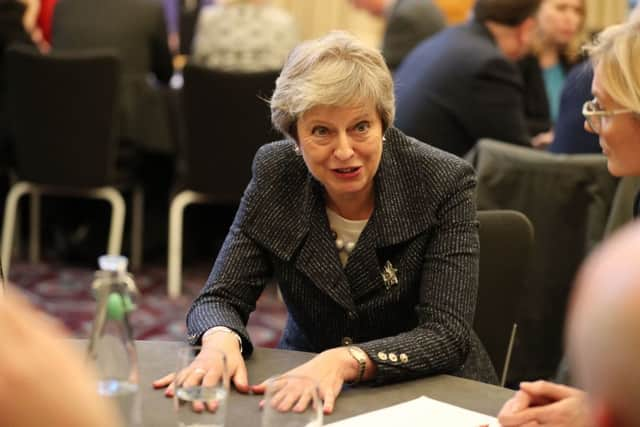Analysis shows economy would be 3.9% smaller under Theresa May's Brexit deal
Analysis of a model closest to Theresa May’s preferred Brexit outcome suggests the UK economy could be around 3.9% smaller after 15 years.
A no deal Brexit would leave the UK economy around 9.3% smaller, the analysis finds.
Advertisement
Hide AdAdvertisement
Hide AdEven if negotiations on UK-EU trade secure everything Mrs May has asked for, the economy would still be 2.5% smaller.


Government analysis concludes that lower immigration will harm the UK economy, with the impact on GDP being 1.8% worse if net migration from European Economic Area (EEA) countries falls from current levels to zero.
The economic impact on Scotland would be roughly average compared with the UK as a whole, with the economy 2% smaller by 2035 under modelling of the proposed Brexit deal, and 8% smaller under a no-deal scenario.
Staying in the single market via membership of the EEA would leave the economy 1% smaller after 15 years.
The analysis is based on a series of assumptions, and because the proposed Brexit deal does not include the full future EU-UK economic relationship, none of the models perfectly reflect what will be on offer.
Officials have modelled a deal based on the government’s Brexit White Paper, which formed the foundation of the Prime Minister’s Chequers plan, but this has been rejected by the EU and many in Mrs May’s own party.
However, one of the models examines what could happen if free movement ends and migration falls, while also applying a middle-of-the-road estimate of the impact from non-tariff barriers to trade, such as customs and regulatory checks.
Under that model, the closest to the proposed deal as it currently stands, overall UK-EU trade could fall by 13%, while trade with the rest of the world is estimated to increase by just 4%.
Advertisement
Hide AdAdvertisement
Hide AdThe analysis also models the average increase in the cost of trade with the EU for various economic sectors.
For financial services, the cost of trade would increase by 9% for financial services and 8% for other services.
Trade costs for the agri-food sector could rise by 7% under the Prime Minister’s deal, compared with 35% under a no deal scenario that would see average tariffs of 20% imposed.
For manufactured goods, costs would rise by 4% under the Brexit deal and 13% under no-deal.
The modelling assumes that all existing EU trade deals are transferred into new UK agreements, a process that has only just begun.
It also assumes trade deals are struck with a range of new partners, including Australia, New Zealand and members of the Trans-Pacific Partnership agreement, as well as a UK-US trade deal, despite President Donald Trump’s comments this week that Mrs May’s preferred Brexit would make a deal more difficult.
It assumes that under all new trade agreements, all tariffs are fully eliminated, which the document admits is “ambitious”.
New trade deals would have a very small positive impact on UK GDP of just 0.1%, outweighed by the negative impact on the economy.
Advertisement
Hide AdAdvertisement
Hide AdFreeing the UK from EU regulations would also add just 0.1% to GDP
Wages would fall by an estimated 2.7% after 15 years under the model closest to the proposed deal, and by 10% under a no-deal scenario.
Modelling of government finances after Brexit does not include impacts on trade, but under the Chequers plan borrowing would rise by £26.6bn, and by £119.1bn under a no-deal scenario.
